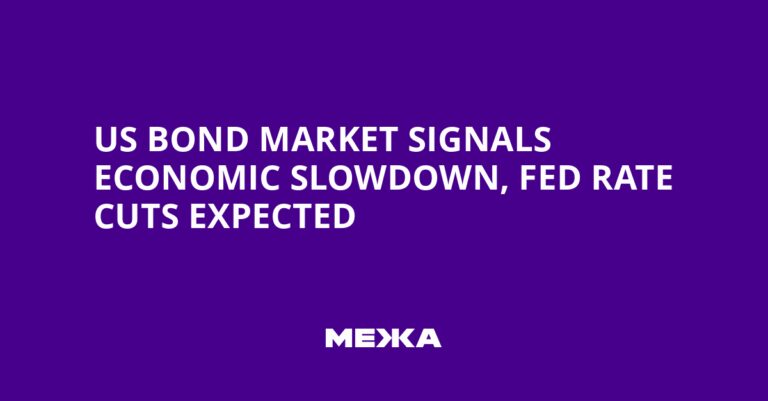While the stock market holds near historical highs, signals from the bond market point to rising concerns about the state of the U.S. economy.
The data for the current month suggests that the labor market is showing greater volatility than analysts expected. This has fueled a rally in the bond market: investors are seeking safer assets and betting on a Fed rate cut as early as this week.
After a surge in demand from investors, yields declined: two-year Treasury yields fell to their lowest since 2022, and 10-year yields to a level not seen since April, when tariff-talk concerns raised worries about the pace of economic growth.
Such a drop in yields suggests that markets are revising expectations of a labor market weaker than anticipated and potentially slower economic growth.
The Federal Reserve, which has held the federal funds rate at its December level from last year, is leaning toward an expected rate cut at this week’s monetary-policy meeting, as labor continues to show signs of weakness. Investors are actively pouring money into Treasuries to lock in favorable rates ahead of anticipated cuts.
Market bonds acknowledge that job creation, a powerful engine of the U.S. economy, is slowing.
The two-year note yield serves as a gauge for monetary-policy expectations, and it is now retreating as markets price in the prospect of rate cuts. Meanwhile, the 10-year yield is positioned for future economic growth.
Yields are falling as the market expects slower growth ahead.
Deutsche Bank’s chief economist Matthew Luzetti on Friday said he raised his expectations for rate cuts this year, forecasting three quarter-percentage-point cuts in September, October, and December.
“From the latest data, we see further weakness in the labor market and somewhat more modest inflation pressures than expected, so we moved one rate cut forward to earlier next year,” said Luzetti in a Friday note.
Bank of America earlier this month also revised its expectations for Fed rate reductions: they expect a quarter-point cut in September and December after previously predicting zero cuts this year.
“The August payrolls report is likely to reinforce the Fed’s concerns about labor-market weakness.”
Not all is clear about the size of future cuts. Markets are pricing in roughly a 96% probability of a cut to the Fed’s federal funds rate, while the probability of a larger cut is around 4%, according to this week’s assessment.
Consumer spending and inflation remain key factors
As investors adjust to the reality of a softer labor market, consumer spending this year remains relatively resilient, supporting expectations for economic growth, says Bill Merc, Head of Capital Markets Research at US Bank Asset Management Group.
Consumer spending rose 0.5% from June to July, according to the U.S. Department of Commerce. The second quarter also expanded more than expected on the measure of gross domestic product.
“Consumer spending remains the engine of growth,” Merc notes. “We have not yet seen signs of it cooling, but we are watching labor-market developments closely.”
And while concerns about possible labor-market weakness continue to be a focus for investors, inflation still poses definite risks. The core Consumer Price Index in August rose 3.1% year over year – well above the Fed’s 2% target.
“Short-term (borrowing) rates are falling faster than long-term ones, and that also signals concerns about long-term rates amid great uncertainty over budget deficits and high inflation that does not ease.”
All in all, markets continue to reflect changes in the Fed’s monetary policy, pairing higher consumer spending with ongoing inflation pressures and signs of a cooling labor market. For investors, this is a cue to stay vigilant about how the U.S. economy will unfold in the coming months, considering potential rate cuts and their impact on bond yields.


